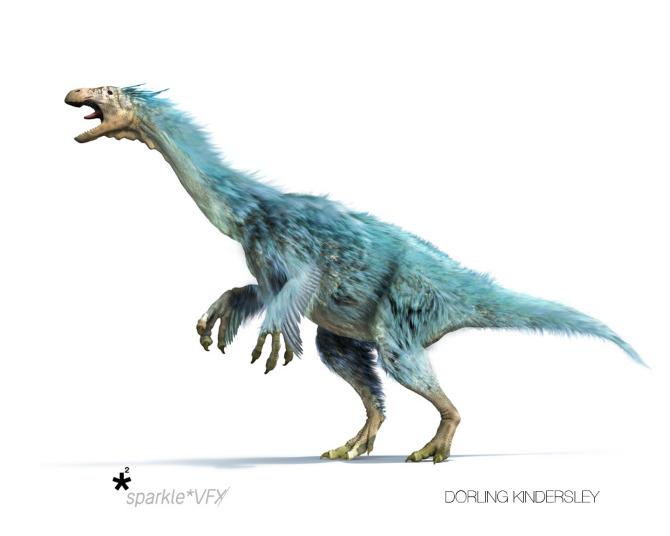Welcome to Alxasaurus

Name Definition
Alxa lizard (named after the Alxa desert of Mongolia)
Name Given By
Dong Zhiming and Dale Russell in 1993
Location
Bayin-Gobi Formation of Inner Mongolia
Classification
Dinosauria, Saurischia, Theropoda, Maniraptora, Therizinosauria, Therizinosauroidea
Size
about 2 meters tall (6.5 ft), about 3.5 - 4 meters long (11.4 - 13.1 ft), ~340 kg (750 lbs)
Temporal Range
Albian stage of the Early Cretaceous, approximately 113 - 100 million years ago
Ecological niche
possibly mid-sized herbivore/omnivore
Species/Sub Species
A. elesitaiensis
Diet
given the fact that Alxasaurus is a therizinosaur, it would have been mostly herbivorous, but since it was an intermediate form between the normal theropods and the therizinosaurs, Alxasaurus would have maybe consumed some animal material but would have certainly needed to scavenge for it
Introduction
Alxasaurus is a genus of therizinosauroid dinosaurs that lived in Mongolia during the Early Cretaceous. Alxasaurus means “Alxa lizard” and is named after the Alxa desert in Inner Mongolia. The specific name refers to the village of Elesitai which was near the site where the Alxasaurus specimen was discovered.
The first remains of Alxasaurus were discovered in 1988 and were described 5 years later in 1993 by Dale Russell and Dong Zhiming. Since then, 5 more specimens of Alxasaurus have been discovered in the Albian Bayin-Gobi Formation of Mongolia. The holotype specimen is the largest and the most complete of the 5 specimens, and represents the entire genus the best, consisting of a dentary (lower jaw) with some teeth, 5 cervical vertebrae (neck vertebrae), 28 caudal vertebrae (tail vertebrae), 5 sacral vertebrae (vertebrae connected to the sacrum which is a shield-shaped structure in the pelvis), 9 rib bones, 15 chevrons (a chevron is a bony arch on the ventral side of a caudal vertebra), a disarticulated scapula, both coracoids (the projection from the shoulder blades that are attached to the biceps), both humeri (the bone between the shoulder and the elbow), both ulnae and radius (the radial and ulna bones are the two large bones in your forearm), an almost complete manus (the manus is basically the hand of all animals on the forelimbs), both ilia (the large broad bone forming the upper part of each half of the pelvis), both ischia (the curved bone forming the base of each half of the pelvis), and both femora (femur is the thigh bone).
Alxasaurus is one of the most important therizinosaur finds so far, as it represents a gap between the evolution of the normal meat-eating theropods and the herbivorous therizinosaurs, making Alxasaurus an intermediate form between the two types of theropods. This is clear since Alxasaurus shows both therizinosaur features as well as more standard theropod features. And given it lived in the Early Cretaceous epoch, Alxasaurus would have most clearly been an ancestor for the later therizinosaurids.
It is well known that the therizinosaurs were herbivorous theropods that evolved from the carnivorous theropods, and since Alxasaurus represents a transitory form between the two, it is possible that Alxasaurus was capable of digesting animal material and protein. However, Alxasaurus does not have the light build or a robust one to pursue or take down prey, and this is something a predator would have needed in order to hunt. It has also been suggested that inferring through the skeleton shape, Alxasaurus would have had a “pot belly” as some call it which would have been able to store a larger gastrointestinal tract for the digestion of plant matter. Similar to the other more derived therizinosaurs, Alxasaurus also had long arms and claws which were capable of reaching tree branches and grabbing them down so Alxasaurus would be able to eat the tree leaves. All this evidence would suggest that Alxasaurus was herbivorous, but, again, it is still plausible that Alxasaurus was partially carnivorous, and if it was, Alxasaurus would have of course scavenged for it given its build as well as supplement it to its main diet of plants.